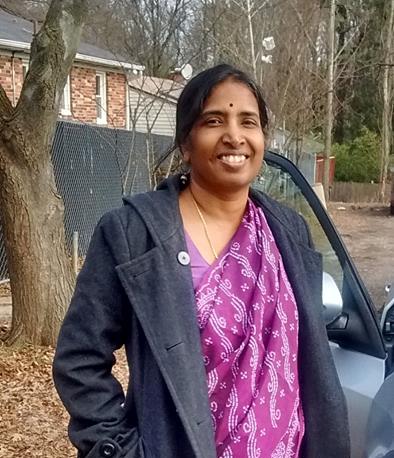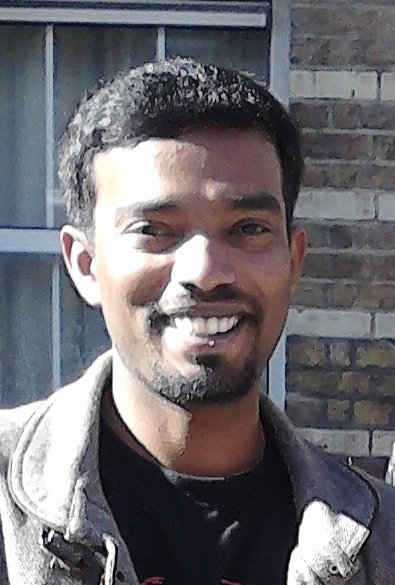Anu Ramdas
 (This article was first published in the group blog Blogbharti in 2009)
(This article was first published in the group blog Blogbharti in 2009)
I have started to feel physical spaces change, ever since I became a mother a few years back. They appear changed in response to my changed status. Not in their form, function or appearance but in their behavior towards me, some though have remained the same (I don’t feel them). This is sometimes funny, disconcerting and strange, but mostly has made me feel very sensitized to physical structures. I now attribute an attitude to them. They may be kind or rude to me, may include, exclude, discriminate or embrace me warmly.
Changes during travel
One of the earliest memories associated with motherhood and the changed physical spaces was the first overnight train trip, after delivery. My growing apprehension of the trip in my favorite mode of transport was, how am I going to nurse the barely two-month-old infant?
Advice given: In our country, it is acceptable to nurse in public, just look around.
Ok.
What about me? Knowing that other women do it did not mean that I was ready and comfortable about it. Anyway, this and subsequent trips saw a steady decrease in my love for travel by train. I somehow managed to learn the nursing part with the dupatta draped just right without smothering the baby. This involved a pretty intricate set of movements in the limited seat space during the day; with co-passengers all around you, being mindful of their space, it was a game of anticipating and coordinating everything before the baby decides to let all know that he was being starved by his mother (note: formula food was not affordable on my fellowship, if it was, I may or may not have used that option. Hence, this post is not an argument for or against nursing.)
Soon another structure within the train started to harass me -the narrow berth! Being of average height and build, this space worked fine for me before. But now, with the baby steadily growing with each trip, the berth started to be a different thing. All my life I had seen mothers sleep in this narrow space with their children, but to actually experience it was plain uncomfortable. Seeing future trips spent commuting in this cramped fashion, I started to desperately ask, when can the baby have his own seat? Answer: when he turns five!! This is unnatural, mother and child are to morph into one being in the nights, because the train seats, a paid for physical space, does not recognize them as two people?
All this left me with ‘before and after’ memories of train trips. The toilets, the food, the smells they were all the same, but the train now made me intensely conscious and announced to the world my well-hidden shyness. The berth, however, was blind to my changed status. Believe me, they did not do this before. I had never felt their meanness or blindness. They just got me where I wanted to go, let me make new friends, dream endlessly, read and stare outside. Now, they were almost hostile and mute to reason. They wouldn’t talk. That is one thing they seem to have cleverly left out while transforming into live monsters. These creatures could be ignored. They were not part of my everyday life and there was a choice of not being in that space.
At the workspace
Unfortunately for me, old familiar structures at the workspace started to take on aforementioned attitudes of the train. Ignoring and avoiding these spaces was not going to help. My work was within laboratory buildings, with 24-hour access to conduct experiments. I returned here after maternity leave, prepared for many changes including constraints on time. Anticipated changes were manageable, and the higher levels of energy combined with guilt at leaving the baby at a daycare translated into brisk efficiency. Everything was streamlined, nevertheless, some experiments would not fit within daycare schedules. Unanticipated space constraints became a challenge. Before the motherhood, I would not think twice about going in the middle of the night to do follow up work, and if the mood took me, do more work. Now, extraordinary effort went into plans to reduce the number and length of such visits, leaving scope for just the essential monitoring, switch on/off kind of stuff. This too did not work. Tried taking the nuclear family to the lab, while I tinkered rapidly. This, however, got me pulled by the authorities: “how would we explain the presence of a baby should something go wrong in the building?” This was not a high security, radiation-spewing kind of lab, just a regular plant and harmless microbe research one. Yet, they had a point, and I agreed.
This kind of transition to work pattern was difficult. I also started to observe and talk to other mothers handling this transition; some had stopped working on the longer experiments, some had learned to delegate, while others moved to administrative kind of work. These were smart decisions at the individual levels to adapt but to me, all of this screamed compromise. Most mothers had some support in the form of spouse or friends, who were willing to hold the baby for the short periods of time when we worked during non-office hours. So what was stopping us? The building? The non-availability of a little space marked out for such times was the only hindrance (not lobbies, stuff happens with babies and many of these buildings don’t even have lobbies). Really, it is just a little space; a chair, a makeshift screen would do.
I then started to work on what I convinced myself were more elegant experiments, ones that could be left behind at the end of the day. But at heart I knew, and missed the hands-on, getting fingers dirty, elbows scratched kind of work that really allowed ‘finding a way’ rather than following a way. The natural intensity and passion towards work were being replaced with cool efficiency. The spontaneity was leaving the mothers. And the race was happening without me.
As working women in Science, we were aware of the challenges that such careers presented and regularly discussed their impact, but ‘space’ as a significant factor was never articulated and hence left me quite unprepared to deal with it. The stony refusal of the buildings to accommodate the changing needs of some of its workforce, added to all other known factors, in a hidden manner. The rigidity of the physical space could not be blamed on anybody or anything, we just learn to live with it. Because, it was we who had changed, I thought.
Workspace in a different land
Two years later, space in the form of an unknown alien land became my destination, when I landed in a small university town in the US. The laboratories, however, are the same everywhere, but I had no fear of non-existent spaces, for the baby was just weaned. I launched into work with the complete intent of regaining lost ground.
In a meeting with an external committee, evaluating the department, I found myself with a bunch of others (lower echelons) being asked about our levels of satisfaction in this place (if as a group we were figuratively tossed back to the countries of origin we would fall in almost all the different continents). Everybody said that the move here was good; a mother of two, however, had an issue. She said this building, did not provide her space where she could pump breast milk for her infant. I observed everybody, each came from a culture that had a different take on breastfeeding in public in their home countries, but here they had probably adapted to the local practice. The younger males probably had wives with the same issues as this woman, the older committee members with hazy memories of parenting days may have had daughters who were nursing. Their expressions were not readable, my own feelings were of envy and fellow feeling. Envy, because she had circumvented the prolonged guilt that troubled me when the baby was in daycare and the tiring consequences; nursing through the night, sleepless nights, worry about infant tooth caries etc. The practice of pumping breast milk released women from this trauma, however, this mother was faced with another obstacle: the process required space for short periods and the 11- storied building did not and would not cater to that.
Physical space built around one
The answer to these dilemmas popped up during an all-women meeting trying to understand why their career graphs looked squiggly and the strain it took to keep it straight. This naturally involves talk about motherhood impacting careers and invariably gets everybody upset and bothered. One member said, “you know, Universities were built for a man in the forties, with a wife at home, and the spaces reflect that”. A sardonic comment followed, “actually, for a medieval man.” Much needed tension-releasing laughter followed this remark. But in this conversation was the answer that I had been seeking.
As always answers to problems that vex me are usually the simplest, obvious and general: Spaces are built for a certain type of individual with certain types of needs and functions, and since it is concrete, it remains that way. And all other different individuals will have to adapt around it or stay out of it.
Imagining physical space for ‘the other’
What does different mean with respect to a building space? It could be specific to age, gender, class, professions and so on. Anybody who does not fit the original ‘form’ around which it was designed is different, requiring adjustment of that individual to the physical structure. One could become different for short periods and be impacted significantly (pregnancy, broken limbs, illness etc).
Does this mean, if the original design of the structure right from the design boards were drawn and executed to include different individuals they would serve a wider spectrum of people? How do we do this? Can we imagine the ‘different’ and anticipate their needs with the physical space?
Let me attempt this while talking about one physical structure that embraced mother and child: the handicap access route -a slope made of wood, concrete or steel.
As a mother with a toddler in a new country, our access with a stroller to most public and private buildings was made simple and easy via the handicap access routes. Not for me the Empire State or other iconic buildings, instead it is this simple structure that gets my maximum appreciation.
This small town’s total number of disabled persons would not exceed the numbers in a couple of Bangalore neighborhoods. Yet, one can feel their presence all around in these thoughtful physical structures, including public transport vehicles.
Each time I hit a handicap access sign, my thoughts went to my friends and neighbors in the Paraplegic Rehab Centre housing wounded Ex-servicemen in Khadki, Pune. The residents were from faraway places in India; many were war veterans, and some who were injured at work. These men were very important in the city’s collective consciousness. They reminded us of the horrors of war, and disrupted lives and mostly symbolized a human spirit that was best expressed by their slogan “Please, no pity” while they exhibited paintings done with foot and mouth.
Down the road from this center was the University with libraries and public meeting venues. Across from it were two popular temples hosting many cultural events. I had never seen them participating in meetings and events within these buildings and never wondered about it. For I did know that a small concrete slant could have been used and that it was missing.
I am not sure if they articulated this, but I know we did not imagine that need. This absent physical space restricted them to just watch the cultural events from the entrance of the rehab center, seated in wheelchairs. This is a 5-year-old memory and I really hope it has changed and these structures have appeared, at least in the University buildings and temples.
This is not a solution for all the disabled in India, every design will have to be rethought: footpaths, elevators, schools, colleges, offices, and other public buildings in villages, towns, and cities. A long overhaul surely, but by not thinking about it, we are not just being unimaginative, we are indulging in callousness.
Then, there are others who are different in social status and society accords scant respect for their needs, not by lack of imagination but by deliberate omission. Look at any construction site employing few to large numbers of laborers, do we wonder about the lack of onsite restrooms for them? Structures that we demand for ourselves in any place that we would spend more than a couple of hours. And, there are other vivid memories of women in the neighborhoods throwing tantrums “should the housemaid ask to use the bathroom!” That is a human attitude. And I have no wish to dissect that now.
No, I am not making a case for just a sloped concrete structure or a wider berth, but a case to imagine and implement physical structures that can serve more than just the ideal individual.
~~~
Anu Ramdas is a computational biologist and founder-editor of Round Table India and The Shared Mirror Publishing House. She can be reached at timeandus@gmail.com










